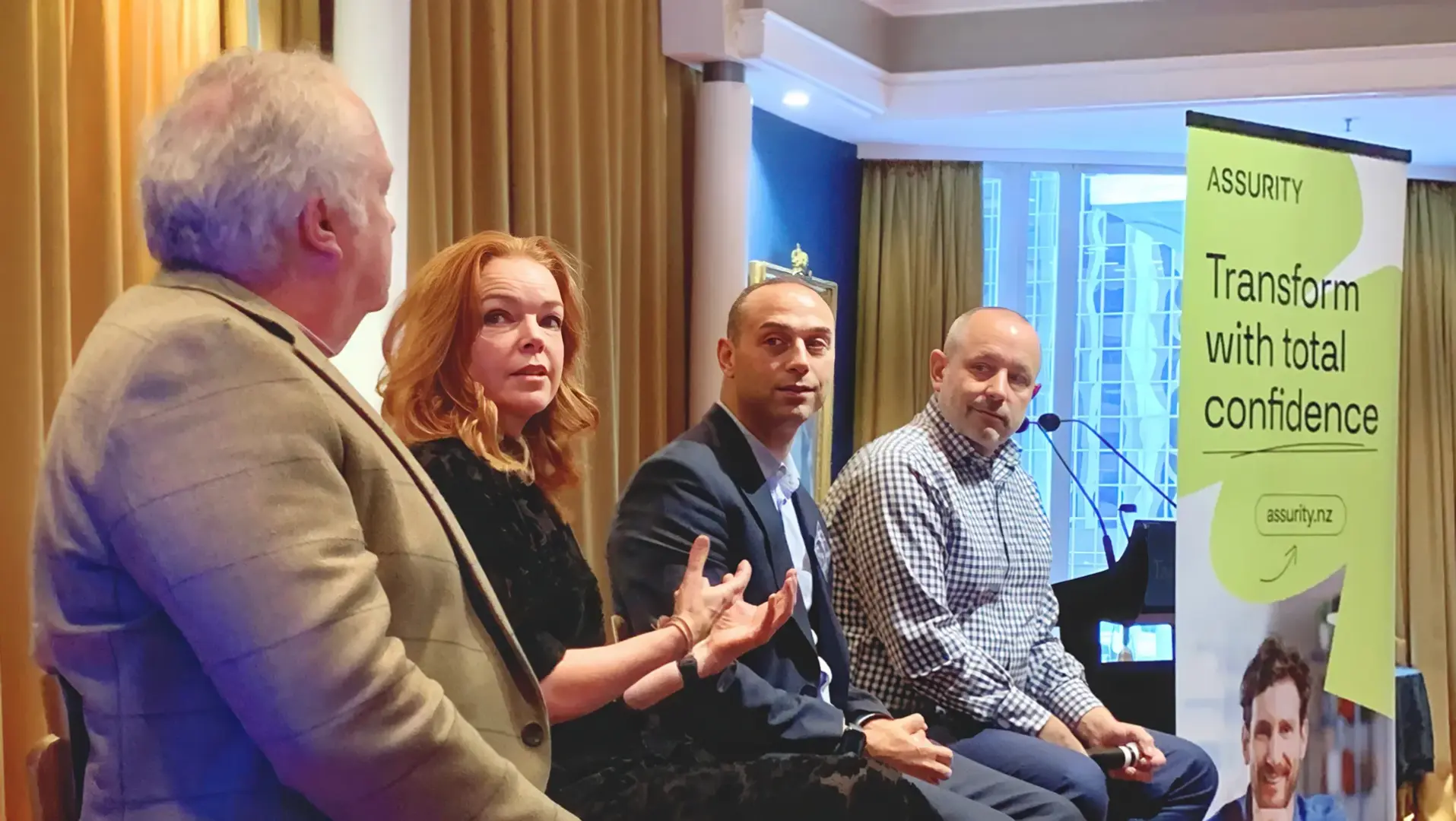In the world of enterprise software delivery, quality assurance and testing are too often sidelined in favour of grand visions and rapid rollouts. At Assurity’s recent Business Transformation breakfast, industry leaders gathered to challenge this mindset. With insights from Peter Love and other experts, the event explored how embedding QA from the outset can transform complex projects into sustainable successes – highlighting the value of collaboration, clarity, and continuous improvement in public sector transformation.
It is concerning that software testing and quality assurance are often disregarded in enterprise software rollouts in favour of big ideas and grand plans. It is important to note that a quick Google search reveals numerous instances of failed software due to inadequate testing. Despite being viewed as less exciting and less advantageous, testing and QA should never be treated as an insurance policy or a PITA (Pain in the A**). This perspective can be very risky for businesses.
That’s why it was heartening to see such a great turnout at our recent Business Transformation breakfast. With a point of departure being that delivering enterprise projects is notoriously challenging, we wanted to share and discuss new approaches to developing winning strategies and had the pleasure of being joined by Peter Love.
Assurity has collaborated with Peter, Inland Revenue, Ministry of Housing & Urban Development and other government departments to develop successful strategies for epic-scale transformation projects. Our approach strongly emphasises quality assurance from the project’s inception. These projects have been executed successfully and can serve as a blueprint for future success in terms of QA and testing.
“Testing and QA should never be treated as an insurance policy or a PITA – this mindset is risky and outdated.”
A project microcosm
I’m happy to share that our recent event had a great turnout with a diverse group of attendees. We had our QA and testing team, current clients who are familiar with our work, potential clients interested in learning more from both technical and business perspectives, business analysts, project managers, systems integrators, and software vendor representatives. This group represents a microcosm of an enterprise project, where input and contributions from all these functions are necessary for success. Collaboration and honest conversations are essential for a successful project.
During our discussion, we emphasised the importance of establishing an explicit agreement among all parties involved in a complex project. It is often easy to nod sagely in agreement during a calm breakfast meeting, but the success of the project often comes down to the basics, such as agreeing on terms, goals, expectations, behaviours, conflict resolution, and roles and responsibilities. These details are crucial to ensure the project runs smoothly and any issues are dealt with effectively.
Put definitions upfront and centre
At Assurity, we believe in starting any major project with a ‘values workshop’ to establish a charter. This helps to avoid the blame game if problems arise, as everyone is focused on what has been agreed. Clear definitions, particularly on what success means and how risk is defined, are crucial to the success of any project. Therefore, we consider this to be the lubricant that keeps the project running smoothly and is highly important.
A question of balance
On to the meat and potatoes, then. Leading the key questions tackled by a panel which included my colleagues Russell Ewart and Justine Denize was one around balancing the drive for continuous innovation and delivery, with reducing TCO (Total Cost of Ownership) while mitigating project risk. Something of a Holy Grail, and one which we usually define with the Iron Triangle of ‘on time, on budget, on scope’. Here’s a grim reality: even the Iron Triangle is insufficient. Projects go on for a long time. Problems may emerge which can’t be anticipated – strategy changes, the world changes, and so on. There’s sometimes no point in delivering ‘on scope’ if the needs have shifted so far that ‘on scope’ is now meaningless.
This goes to the heart of the difficulty of enterprise project delivery. Human intuition, flexibility, awareness, and decision-making come to the fore, along with strong governance. Look for ‘triangulation’ between testers and members of the project team, which helps identify issues. Peter stressed the necessity for shifting QA as far left as possible (at Assurity, we believe QA should be right up front at the very beginning). Watch out for ‘optimism bias’ and the sunk-cost fallacy (sometimes, it’s best to abandon projects which have shifted so far off their foundations that they won’t deliver value. You might get a Shinkansen, or you may wind up with a Concorde). Have a business case and be prepared to amend it as the coal face changes.
“There’s sometimes no point in delivering ‘on scope’ if the needs have shifted so far that ‘on scope’ is now meaningless.”
Context, purpose, prioritisation
Peter made the point that context is crucial, along with purpose and prioritisation (and keeping sight of it). Russell added to that, noting that outcomes depend on solid leadership guiding investments with an ‘all of life lens’; he also noted the value of high-value automation in risk and TCO reduction. In Assurity’s experience, high-value automation enables continuous testing, reducing the risk of regression.
Once systems are implemented, it’s arguable that this is when the hard work starts. While users should have been involved from the start through Human Centric approaches (the project should be done with them, not to them) and therefore well aware of what’s happening and why, the focus shifts from delivery, UAT and user experience testing, to change adoption; after all, as Peter noted, any fancy new product, service or system is useless if no one uses it. If the business was on the journey and part of the decision-making, there’s no throwing something over the fence only for it to return with a few choice words.
Yes, there is a lot of complexity; be conscious of not making things any more complex than they should be. Money doesn’t make up for intuition and intelligence; Ernest Rutherford once noted, ‘Gentlemen, we have run out of money. It’s time to start thinking.’ Careful planning, proven approaches, collaboration, consultation, and people thinking. That’s what makes projects successful.
All in all, this was a highly stimulating and rewarding event. In Assurity’s experience, enterprise projects are always risky but nearly always deliverable. But in my opening sentence are the simple reasons why so many don’t make it. If it starts with quality, that’s also usually how it ends.
Conclusion: Quality at the Core of Transformation
The Business Transformation breakfast reinforced a vital message: successful enterprise projects begin and end with quality. From early alignment on values and expectations to embracing flexibility in the face of change, the event showcased how strategic QA, human-centric design, and strong leadership can overcome complexity. As Assurity’s experience shows, transformation is not just about delivery – it’s about adoption, outcomes, and lasting impact. When quality is prioritised from the start, success becomes far more achievable.
Bonus content
Gain valuable insights and practical guidance on implementing successful business transformation programs by downloading this comprehensive guide. Explore key points, effective strategies, and best practices that shed light on achieving transformational success in the public sector.



